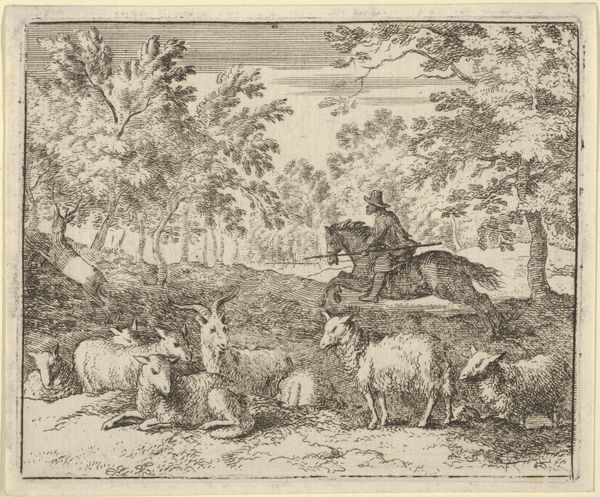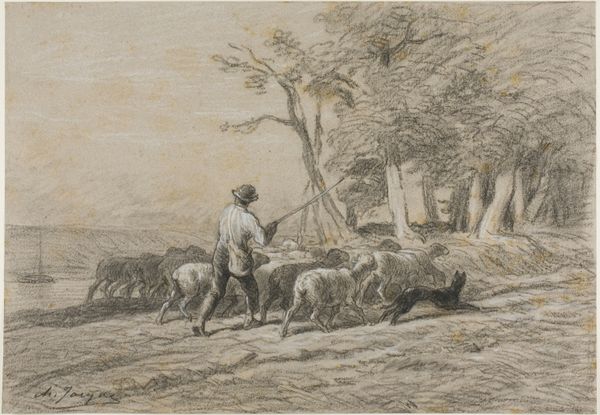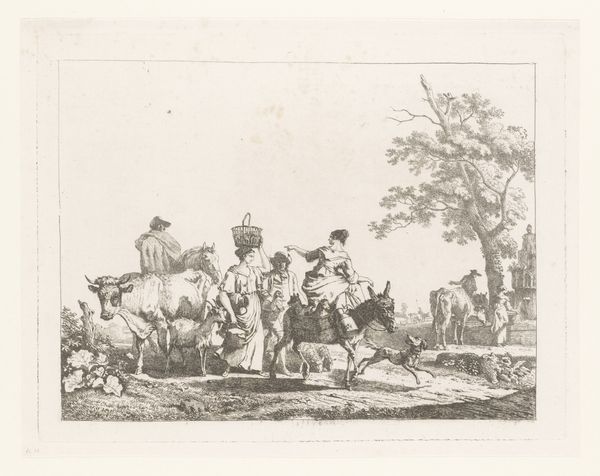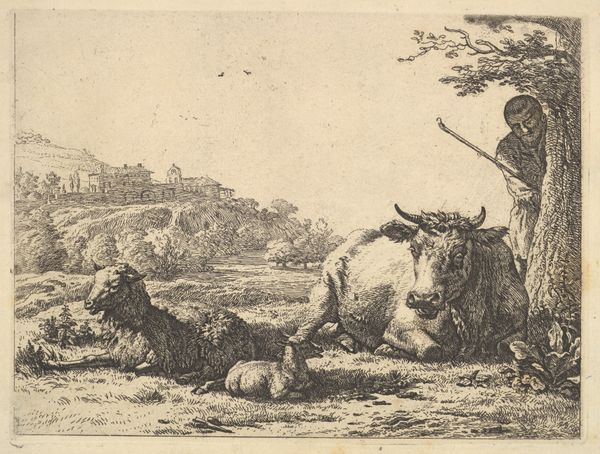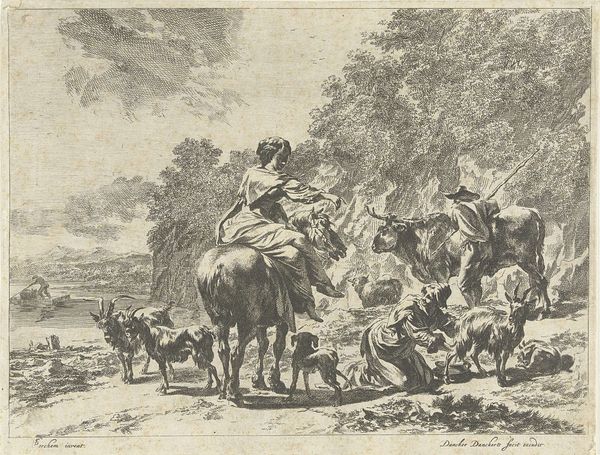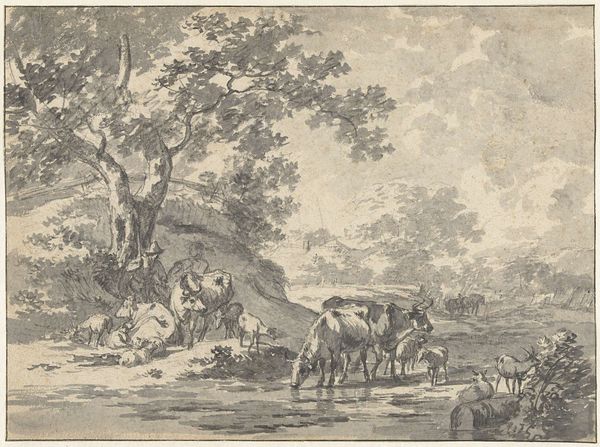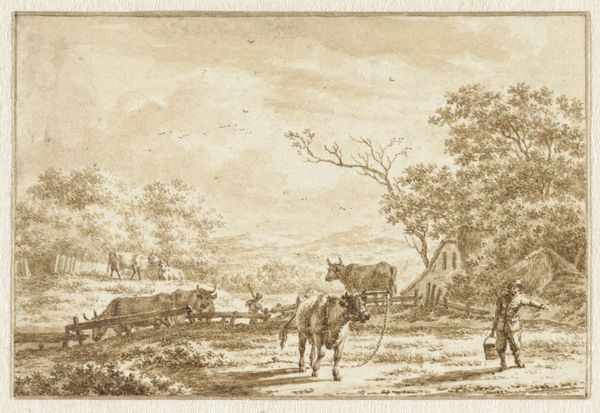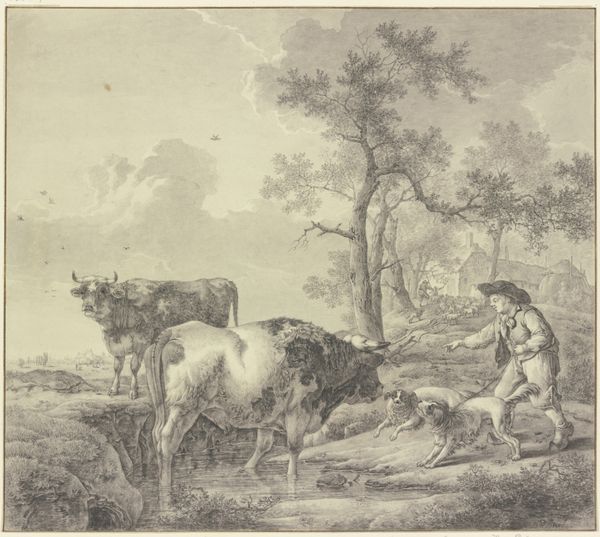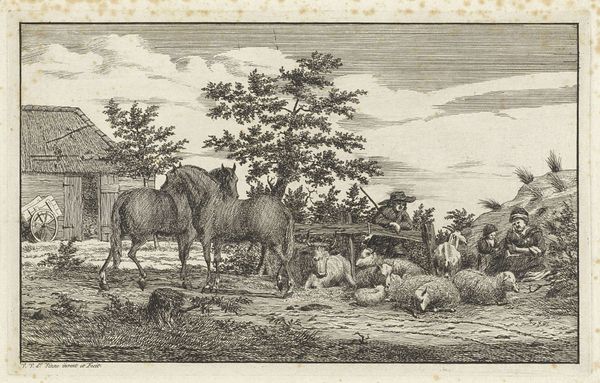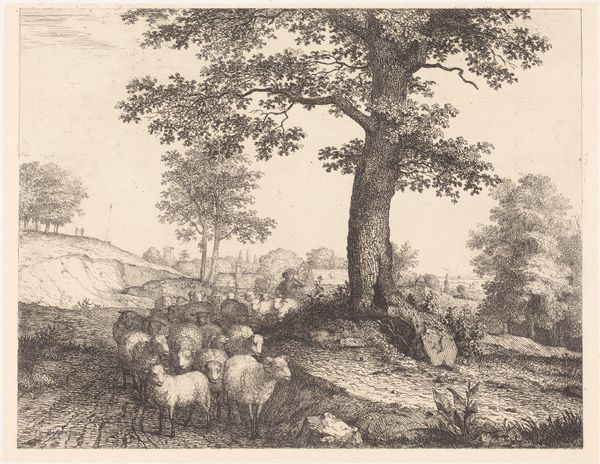
print, etching, engraving
#
dutch-golden-age
# print
#
etching
#
landscape
#
genre-painting
#
history-painting
#
engraving
Copyright: National Gallery of Art: CC0 1.0
Curator: This etching by Allart van Everdingen, likely created between 1645 and 1656, is entitled "The Horse Forced to Pursue the Stag". It's a fascinating example of Dutch Golden Age landscape prints. Editor: The frenetic energy immediately grabs you. The horse is leaping, the trees are a jumble of lines, and the sheep… well, the sheep seem mostly unbothered by the drama unfolding around them. There's a real contrast at play. Curator: Exactly. Everdingen was quite adept at capturing the dynamics of the hunt. Though the title references the stag, there is in fact no visible stag; rather the print highlights a rupture in the supposed pastoral harmony between man, horse, and docile sheep. The rider, ostensibly the master of this scenario, forces the horse, disrupting the expected order. Editor: So you're seeing this less as a depiction of sport and more as a commentary on power, dominance, and the social hierarchies of the time? This pursuit has a forced character, and I’m sensing themes of imposed will onto others; an interruption of bucolic normalcy. Curator: Precisely! Think about the broader context: the Dutch Republic was consolidating its economic power, and images like this reflected societal tensions of control and freedom, order and imposed behaviors. It also alludes to colonial encounters as a symbol of disrupted tranquility, highlighting colonial powers disrupting other worlds. Editor: That definitely shifts my perspective. The seemingly idyllic scene becomes unsettling. I'm struck by the almost indifferent stance of the sheep. Are they intended to represent those either unaware of or indifferent to abuses of authority and domination? Their apathy provides a sinister undercurrent in what is often categorized simply as a landscape piece. Curator: That's a sharp reading. These landscapes were often imbued with moral undertones, subtly critiquing societal dynamics, and this reading highlights the social critique often found in Everdingen’s imagery. Editor: It leaves you pondering. The tranquil imagery hides underlying messages concerning social power and disruptions of established orders. Thanks for drawing out that richer subtext. Curator: My pleasure. It's amazing what historical context can reveal within a seemingly simple landscape.
Comments
No comments
Be the first to comment and join the conversation on the ultimate creative platform.
